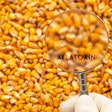From WATTAgNet:
A recent report in the Proceedings of the National Academy of Sciences says bats save corn farmers more than $1 billion by eating moths that cause damage to crops.
The research used nets to fully enclose 20-by-20 meter sections of large corn fields in southern Illinois. The nets exclude foraging bats, as the research focused on damage caused by corn earworms, the larvae of a species of moth that is preyed upon by bats such as the eastern red bat.
The study found that corn grown where bats could not feed on the moths had 56 percent more larvae-damaged kernels. The bats increased crop yield by 1.4 percent which, based on current corn prices, adds up to a difference of $3.18 per acre and more than $1 billion worldwide.
“Bats face a variety of threats globally, but their relevance as predators of insects in ubiquitous corn-dominated landscapes underlines the economic and ecological importance of conserving biodiversity,” the report says.
The researchers’ findings also suggest the bats help protect the crops against fumonisin, a fungi-produced toxin that causes health hazards to livestock and decreases crop value.
Fumonisins interfere with the sphingolipid metabolism leading to cell membrane damage that can affect the liver, kidney, brain and also the nervous system. The highest sensitivity to fumonisins is observed in pigs.
Bats are worth $1 billion to agriculture
Corn farmers, look to the sky at dusk and mutter thanks to the bats swooping over your moth-ridden fields: Those winged mammals put more than $1 billion back into your collective pockets, a new study suggests. The first-of-its-kind research used nets to fully enclose 20-by-20-meter fragments of large corn fields at night, thereby excluding foraging bats, throughout the growing seasons in southern Illinois in 2013 and 2014.
















